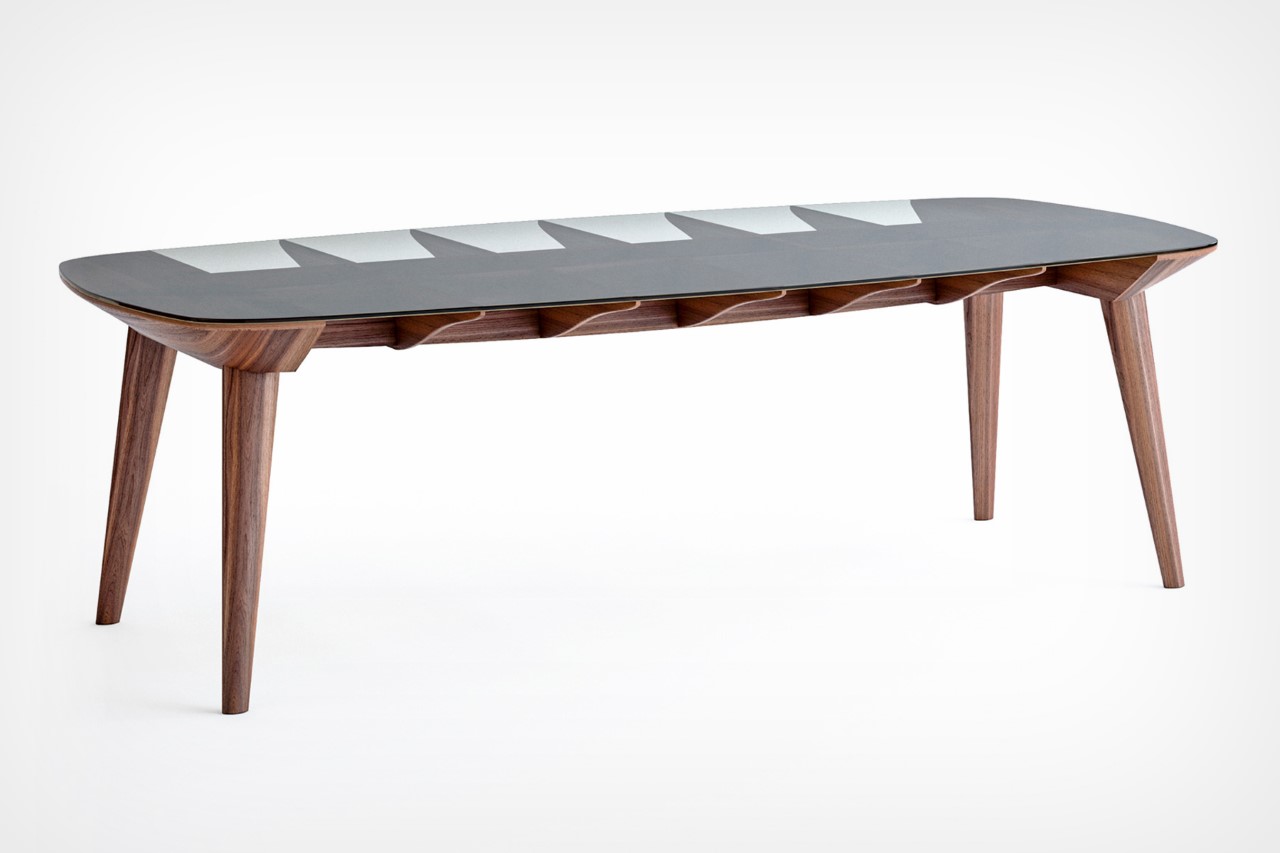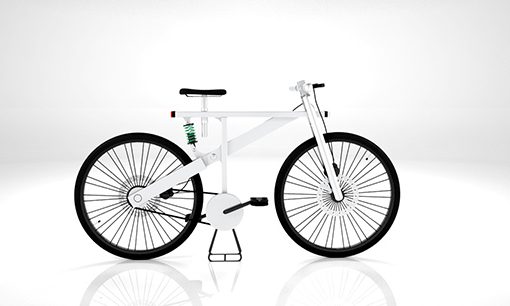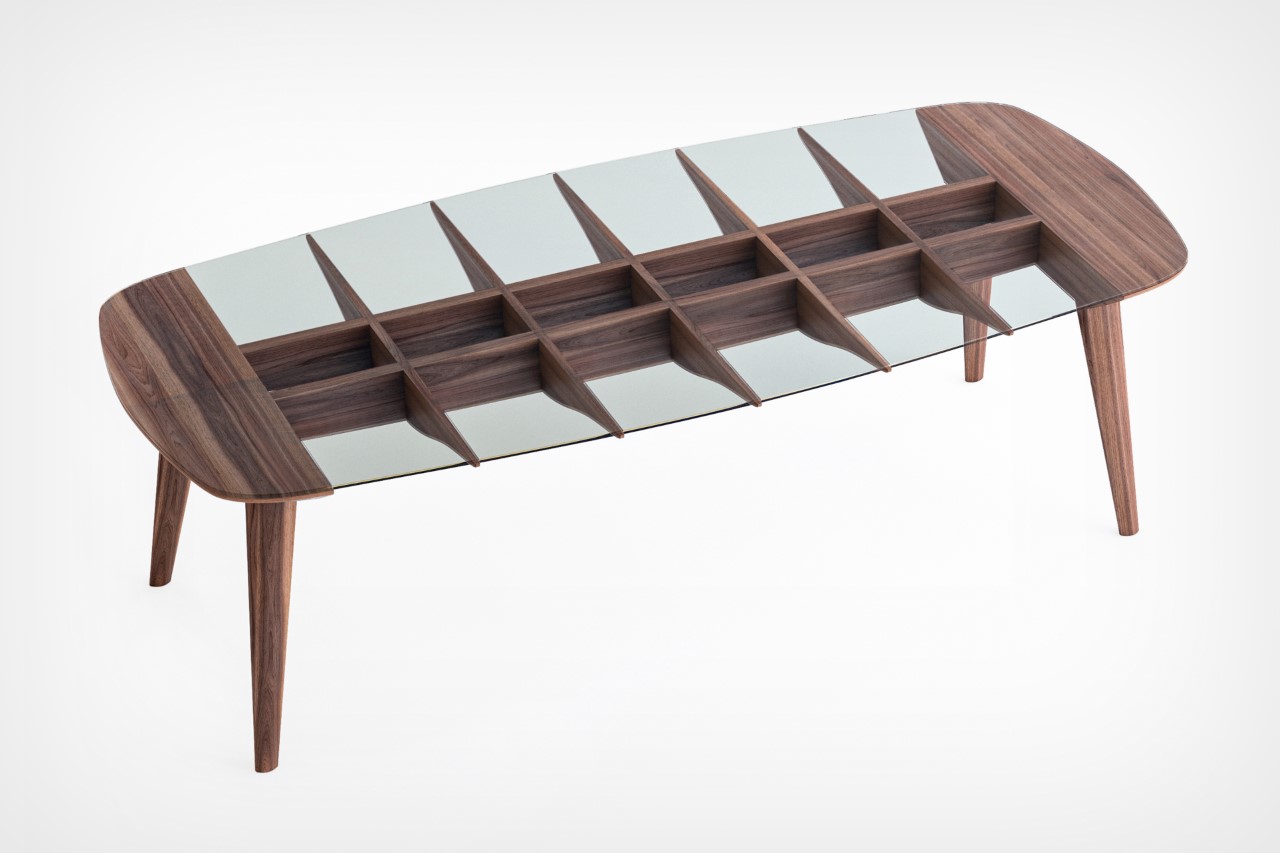
Inspiration can sometimes come from the unlikeliest of places, as is evident with the Herringbone Table. Taking visual cues from the herringbone tree’s shape, the table abstracts that form by using a clever interplay between wood and glass to create something that looks skeletal but isn’t. Found in wintry areas dominated by coniferous flora, the herringbone tree’s leaves have a pointy, skeletal shape, which is almost reminiscent of the herringbone fish’s skeleton. Although one would deem the source of inspiration to be unconventional, the table’s design reinterprets it beautifully, creating something that has a unique take on positive and negative forms, while still serving well as a table.
Designer: Alexandre Caldas
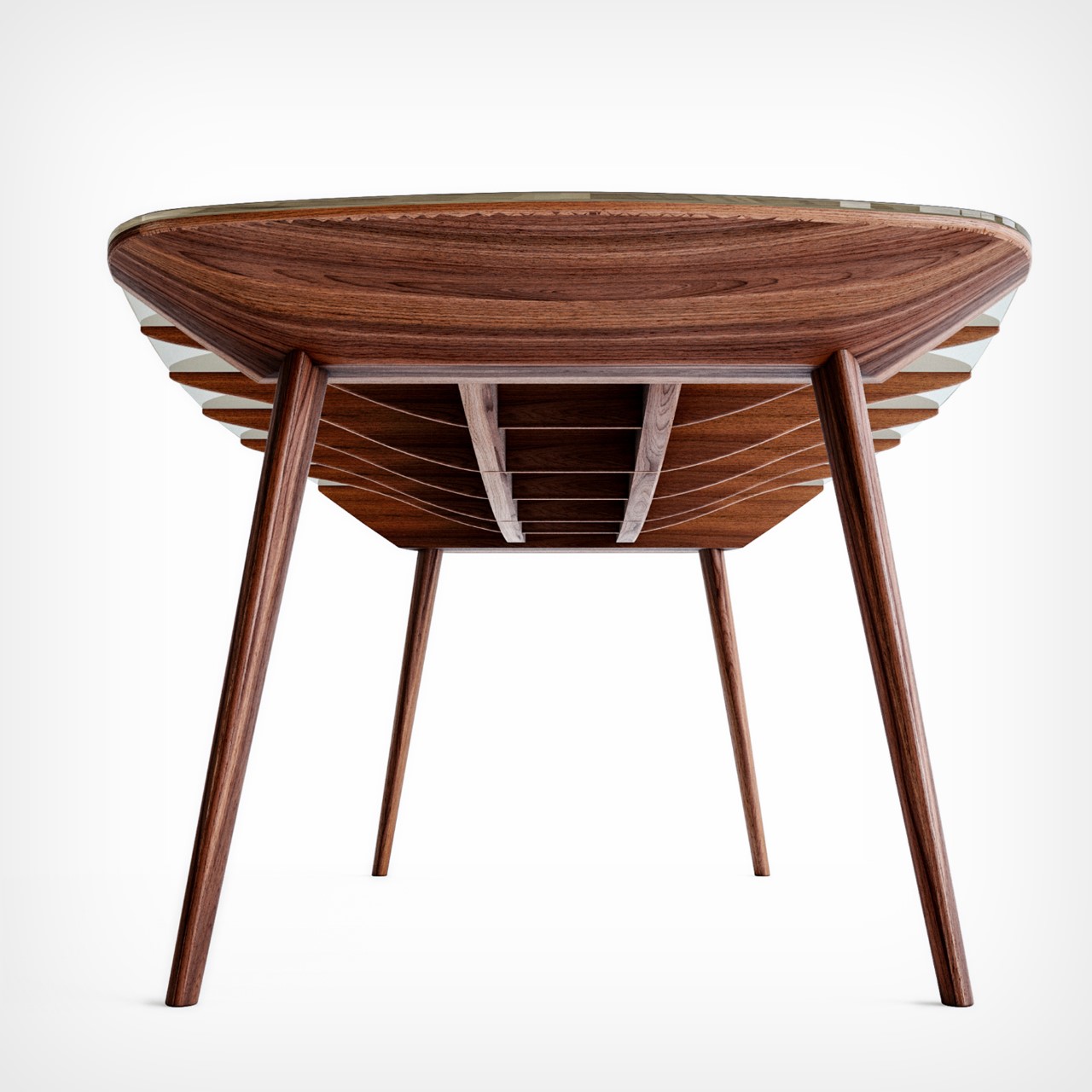
The herringbone tree is a perfect example of nature removing anything superfluous and retaining only the essentials. Take a look at the tree and it almost looks like a cactus in the arctic. The leaves are thin and pointy, as are the tree’s branches. Alexandre Caldas believed in translating this approach into his furniture. The resulting table reflects that approach by removing/conserving wood (a natural resource) and opting for recyclable glass instead.
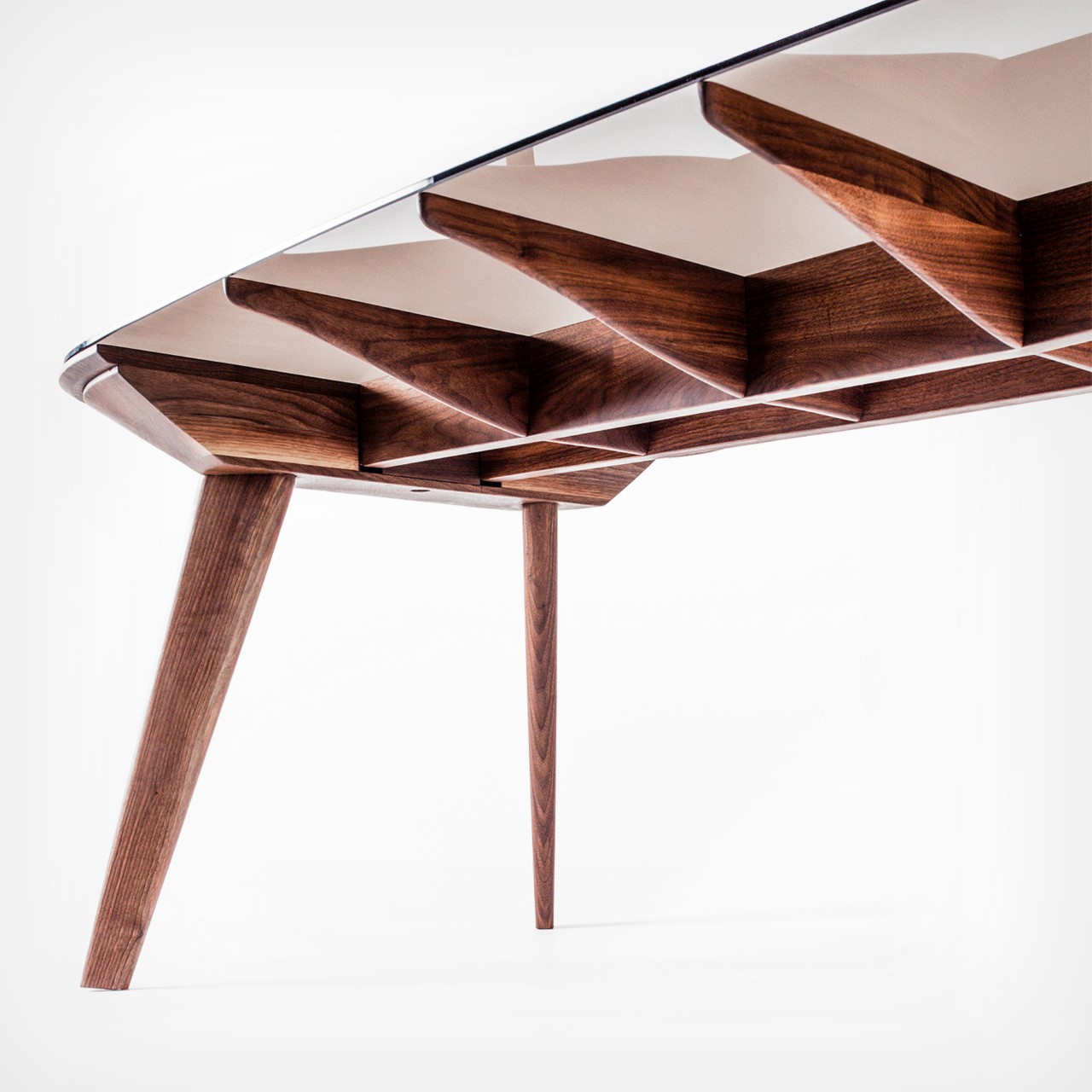
Barring the central channel, the table doesn’t use any long pieces of wood. The two ends help prop up the plate of glass, while skeletal ribs (that are half-lap jointed into the central channel) help support the glass plate. The entire table is made from certified American Walnut, while Caldas’ plan is to make future units out of pine wood, paying true homage to the herringbone’s origins.
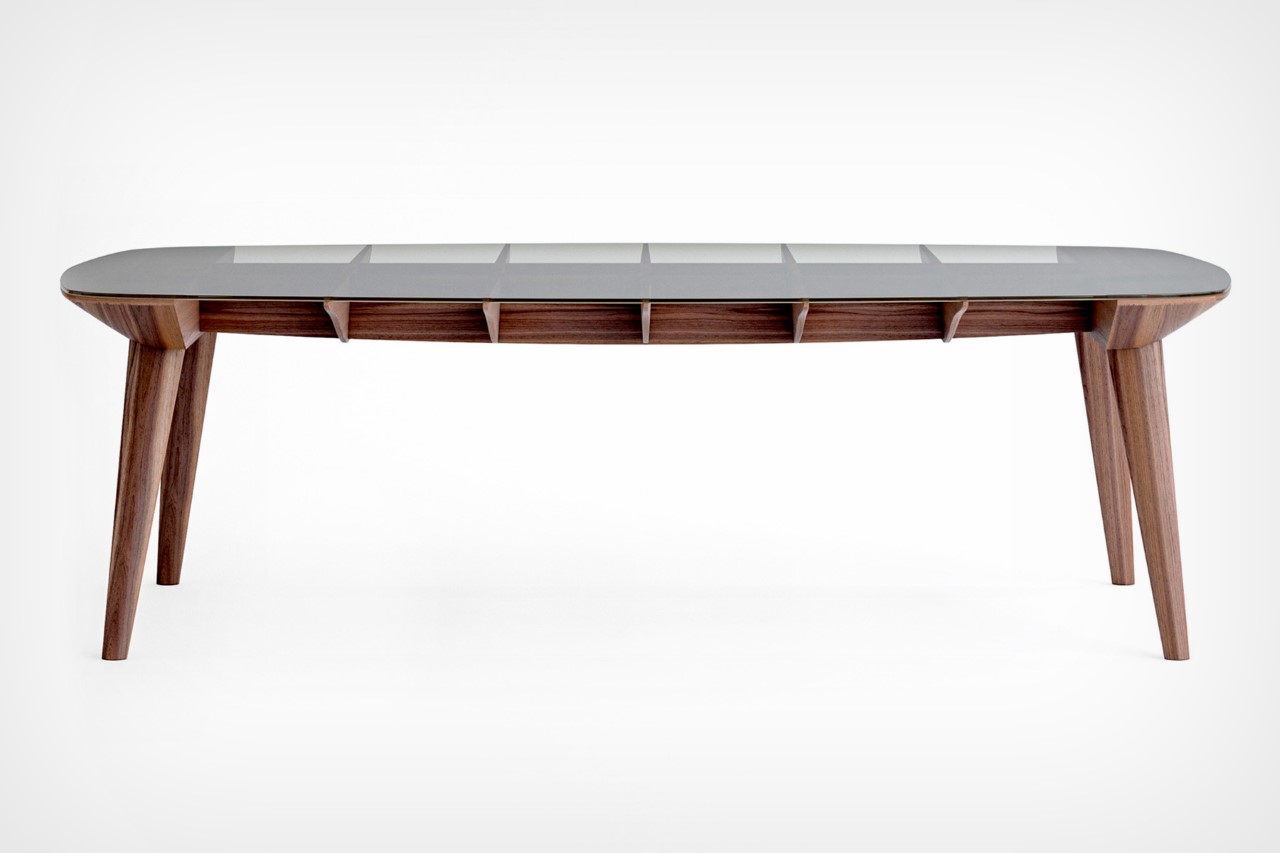
“[The table was made’ using certified solid wood, using the least amount of glue possible, using one of the world’s most recycled resources (glass), along with the know-how of master craftsmen with traditional woodworking techniques,” designer Alexandre Caldas said.
The Herringbone Table is a Bronze Winner of the A’ Design Award for the year 2023.
